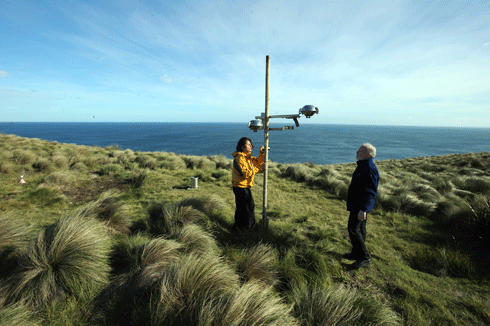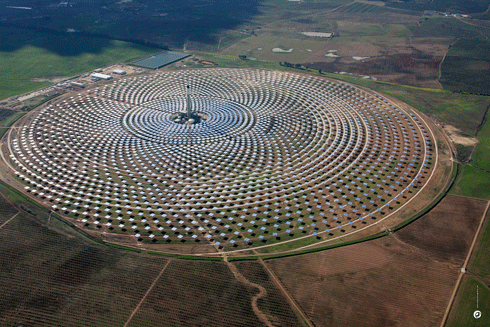
|
Published: 9 March 2011
Climate warming, despite ‘ups and downs’
Periodic short-term cooling in global temperatures should not be misinterpreted as signalling an end to global warming, according to CSIRO Marine and Atmospheric Research Honorary Research Fellow, Barrie Hunt.

|
|
Researchers taking measurements at Cape Grim, Tasmania, the foremost facility of its type for monitoring pollutants such as carbon dioxide in Southern Hemisphere air. Credit: CSIRO
|
‘Despite 2010 being a very warm year globally, the severity of the 2009–2010 northern winter and a wetter and cooler Australia in 2010 relative to the past few years have been misinterpreted by some to imply that climate change is not occurring,’ Mr Hunt said.
‘Recent wet conditions in eastern Australia mainly reflect short-term climate variability and weather events, not longer-term climate change trends. Conclusions that climate is not changing are based on a misunderstanding of the roles of climatic change caused by increasing greenhouse gases and climatic variability due to natural processes in the climatic system.
‘These two components of the climate system interact continuously, sometimes enhancing and sometimes counteracting one another to either exacerbate or moderate climate extremes.’
Mr Hunt says his climatic model simulations support what is clear from recent observations – that in addition to the role of climate change linked to human activity, natural variability produces periods where the global climate can be either cooler or warmer than usual. Mr Hunt’s results were recently published in the international journal Climate Dynamics.
Mr Hunt found that seasonal cold spells will still be expected under enhanced greenhouse conditions. For example, monthly mean temperatures up to 10°C below present values were found to occur over North America as late as 2060 in model simulations, with similar cold spells over Asia. Variations of up to 15°C below current temperatures were found to occur on individual days, even in 2060, despite a long-term trend of warming on average.
‘These results suggest that a few severe winters in the Northern Hemisphere are not sufficient to indicate that climatic change has ceased. The long-term trends that characterise climate change can be interpreted only by analysing many years of observations.
‘Future changes in global temperature as the concentration of greenhouse gases increases will not show a simple year-on-year increase but will vary around a background of long-term warming. Winters as cold as that recently experienced in the Northern Hemisphere, however, will become progressively less frequent as the greenhouse effect eventually dominates.’



